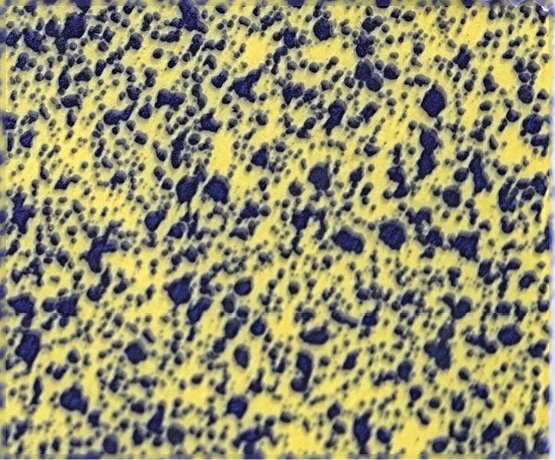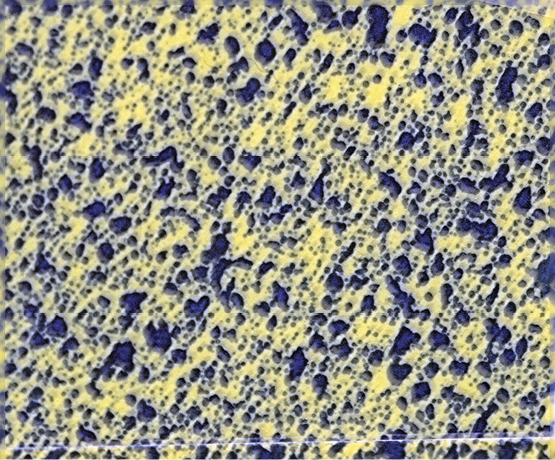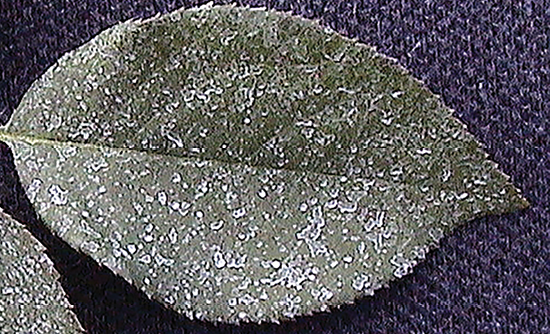The Plant Doctor: How to Spray Fungicides to Protect Landscapes, Gardens, and Turf on Residential Property
Background
Fungicides work best as protectants. This means it is best to apply fungicides before a plant is exposed to a pathogen. After a plant has become diseased by an infecting pathogen, applying the correct type of fungicide may stop the spread of the disease or even put it into remission, but the plant will stay diseased. In the right environment, the disease will reappear. It is important to learn how to apply fungicides properly to prevent and limit disease.
Cautions
Although fungicides are generally of low toxicity, they present off-target risks—even biological fungicides. Before using a product, read the label and adhere to its guidance. For example, many fungicides pose a risk to aquatic species. Do not apply them near open water or where they may run into open water. Make sure that you follow and adhere to any instructions for pollinator protection.
Sprays using high pressures and fine nozzles increase the risk of drift, the aerial movement of the spray to areas not meant to be sprayed. Drift can pose risks to wildlife, pets, domestic animals, people not wearing protective equipment, and even structures. Before spraying, ensure that the area is free of people and animals. Spraying fence lines or other areas where you have poor control of neighbors or their animals can be especially risky and requires special care.
Spray when there is little or no wind. Most often, this occurs in the early morning or near sunset. Spraying at these times may also reduce risk to pollinators.
Publication Intent
This publication is for occupants of residential properties who want to protect their living landscape from plant diseases. It is not for commercial applicators, although the same principles will apply. Commercial applicators employ very different equipment and face different management demands.
Types of Fungicides
There are two broad categories of fungicides: topicals and penetrants. Topical fungicides work like a raincoat; they remain on the outside of the plant and prevent the shower of air-borne fungal spores from infecting the plant. Topical fungicides are also called contact fungicides or protectants. Penetrant fungicides move into the plant and kill or immobilize the fungus during or after infection. Penetrants may move very little or a fair amount once inside the plant. The amount of movement depends upon the particular fungicide, method of application, and the use of adjuvants, such as a spreader sticker. Regardless of the type of fungicide, effective control of fungi depends upon correct application, as well as application timing.
Ornamental fungicides registered for residential use are mostly penetrants, with some topicals. Fruit fungicides are mixtures of both topicals and penetrants. Most vegetable fungicides available to the homeowner are topicals. Examples are given in Table 1.
Table 1. Some Common Fungicides Labeled for Residential Landscapes.1
|
Fungicide name (active ingredient) |
FRAC group2 |
Examples of trade names |
Types of crops for which the active ingredient is labeled |
Type of activity |
|
captan |
M04 |
Usually has captan in the name (e.g., Captan Fruit and Ornamental WP) |
azaleas, camellias, chrysanthemums, roses, apples, peaches, plums, strawberries; some tubers and corms |
topical |
|
chlorothalonil |
M05 |
Bravo, Daconil, Echo, and many brands using the words “All Purpose” or “Broad Spectrum” |
many vegetables, ornamentals (woody, perennial, annual), some fruits, trees |
topical |
|
copper3 |
M01 |
Bonide Liquid Copper Fungicide Fertilome Natural Guard Copper Soap Fungicide |
rose and ornamental shrubs, palms, perennials, many trees, turf, herbs, many truck crops, peanut, grape, berries, pome and stone fruits, strawberries |
mostly topical |
|
mancozeb |
M03 |
Dithane, Dithane M45, Mancozeb, Fore |
ornamentals, trees, some vegetables |
topical |
|
sulfur |
M02 |
Hi-Yield Dusting Wettable Sulfur Southern Ag Black Snake Sulfur |
roses, shrubs, flowers, vegetables, fruits, peanuts |
topical |
|
myclobutanil |
3 |
Fertilome F-Stop Lawn and Garden Fungicide F-stop Fungicide Granules Spectracide Immunox Multi-Purpose |
turf, ornamentals, cucurbits, tomatoes, snapbeans, strawberries, pome fruits (apples, mayhaws), berries (such as blackberries but not blueberries), stone fruits (peaches, nectarines, plums) |
penetrant |
|
tebuconazole |
3 |
Bioadvanced Disease Control for Roses, Flowers, and Shrubs Bonide Rose Rx Systemic Drench Bonide Rose Shield Systemic Rose & Flower Drench Fertilome 2-N-1 Systemic |
ornamentals |
penetrant |
|
propiconazole |
3 |
Bonide Infuse Systemic Disease Control Concentrate Fertilome Liquid Systemic Fungicide II |
ornamentals (woody, annual, perennial), lawns, some trees, bearing stone fruits, and nonbearing citrus, pome, pecan and walnut trees |
penetrant |
|
thiophanate-methyl4 |
1 |
Bonide Infuse Systemic Disease Control Lawn and Landscape (granular) Southern Ag Thiomyl |
turf, ornamentals, some fruits |
penetrant |
1Always read the label before purchase and use. Four vendors produce most of the residential fungicide products available (alphabetical order): Bonide (https://bonide.com), Fertilome (https://fertilome.com), Monterey Lawn and Garden (https://www.montereylawngarden.com), and SouthernAg (https://southernag.com/lawn-garden). A good, but not complete, selection of freshly manufactured biological and biorational fungicides can be purchased from Arbico Organics (https://www.arbico-organics.com).
2Fungicide Resistance Action Committee (FRAC) group. Members of the same group inactivate fungi in the same way, so if tolerance to a fungicide in that FRAC group occurs, using another member of the same group will not help. Frequent (generally every other spray) rotation of FRAC groups limits the ability of fungi to develop tolerance or resistance to that group of fungicides. The exception is fungicide with topical and multiple modes of action (M0X groups, where 0 and X are a number; e.g., chlorothalonil, mancozeb, etc.). Except for copper-based fungicides used to manage bacterial infections, fungicide resistance to these M0X fungicides is rare. In fact, best management of diseases can be obtained by mixing a M0X fungicide with a penetrant fungicide.
3Copper fungicides have diverse formulations, such as copper sulfate, copper octanate, copper diammonia diacetate complex, etc. One formulation may work better against a pest than another.
4Thiophante-methyl is in significant demand by many commercial crop producers. This demand is curtailing some residential uses. You may find liquid concentrate products on your supplier’s shelf that are no longer being sold by the company. This is a demand (risk-cup) problem, not a health or manufacturing problem.
Spray Basics for Fungicides
When applying a fungicide spray, three factors are essential: (1) the volume of spray solution applied in a given area (for example, 20-foot length of row, an acre, or per thousand square feet), (2) type of spray nozzle, and (3) spray pressure. All three are varied in order to make the correct spray pattern for the crop and the fungicide being applied.
Since many diseases begin on the lower leaves of the plant, the spray solution must penetrate the plant canopy and reach these lower leaves. Furthermore, the solution must coat the underside of the plant leaves if good protection is to be obtained, especially if a topical fungicide is used. All three essential factors—spray volume, spray nozzle, and spray pressure—are changed to optimize the penetration of the plant canopy and coating of the plant parts.
Increasing the volume improves both penetration of the plant canopy and coverage of the plant. Spray volumes suitable for some herbicides (e.g., 1 gallon per 5,000 square feet) are not reasonable for fungicides. In general, you will need to apply a volume equal to about 3 to 4 gallons per 1,000 square feet for turf. The volume of spray solution may be more, depending on the type of crop (such as for Irish potatoes), but less is not a good idea.
Spray nozzles break up the stream of solution coming from the sprayer into a distinct pattern of droplets. The more uniform the droplet placement and size, the better the plant coverage. Droplet size influences how it penetrates the plant canopy, moves in the air currents, and is attracted to the plant surface.
Small droplets provide better leaf coverage but lack the force to penetrate the plant canopy. A lot of work has gone into determining the optimal droplet size for fungicides. While there is still some disagreement as to the perfect size, droplet sizes of about 0.01 inch (250 µm) seem to be favored as a happy medium.
Different nozzle patterns are suited for different types of fungicide applications, but perhaps the single best nozzle for fungicides, especially for topical fungicides, is the hollow cone. Select a yellow-colored hollow-cone nozzle, which will produce droplets in the medium-fine range of about 0.01 inch.
Spray pressure affects both droplet size and canopy penetration. Low pressure (about 15 pounds per square inch) produces large droplets, some of which merge, creating some blobs. Fungicide solutions applied at low pressures have problems penetrating plant canopies. Higher pressure (about 60 pounds per square inch) produces smaller droplets and often creates turbulent air patterns, which allow better coating of plant parts, including the lower sides of leaves. Figure 1 shows the pattern created by a hollow-cone nozzle at two different pressures. Information on calibrating your sprayer may be found in MSU Extension Publication M1179, Sprayer Calibration. Further examples, including specific calculations, may be found in Publication 1532 Weed Control Guidelines.


Figure 1. Spray pattern created by the same hollow-cone nozzle at 40 pounds per square inch (psi) (top photo) and 60 psi (bottom photo). Coverage provided by 40 psi is adequate in this case, but you can see the difference that 20 psi makes in the coverage.
Application of Fungicides
Topical fungicides stay on the outside of the plant and prevent fungal spores from infecting the plant. Fungal spores are extremely small, so topical fungicides must be evenly applied over the entire plant to effectively do their job. The trick is in getting an even application with droplets close enough to each other that a fungal spore falling between them will still be killed. Figure 2 shows both a good spray distribution pattern (left) and a poor, oversprayed pattern (right). An application of a topical or penetrant fungicide made similarly to that of the left image will provide good protection. Unless you have specific instructions, such as from a fungicide label or precautions for domestic animal or wildlife protection, use a hollow-cone nozzle, a pressure of 40 to 60 pounds per square inch, and a minimum volume of spray solution equivalent to ½ gallon per 1,000 square feet for crops with a canopy; for turf, use 3 to 4 gallons per 1,000 square feet. Vining crops such as Irish potatoes and cucurbits will also require high spray volumes.
Different sprayer types may use compressed air or carbon dioxide as propellant. The common residential sprayer uses a hand pump to compress the air. Do NOT use a carbon-dioxide sprayer to apply biologically based fungicides (fungicides that contain bacteria, fungi, or nematodes), as it may injure them.
Many fungicide labels, especially for some of the topical fungicides, have some wording that reads something like “spray to run off.” This does not actually mean that you should continue to spray the plant until the spray solution drips onto the ground. It means the spray volume should sufficiently cover the target to the point where the individual droplets may just start to run.
A major problem in home vegetable gardens is that people do not spray topical fungicides frequently enough. Too many people spray only a few times per season and wonder why they lose their tomatoes to disease. Topical fungicides, which are the norm for residential vegetable gardens, stay on the plant surface and do not redistribute to new growth. Many vegetables (for example, some tomatoes and especially cucurbits) grow rapidly enough that a substantial portion of the plant may have grown in the 7 days since the last fungicide application. New growth is not covered by a fungicide, especially by topical fungicides. Therefore, topical and some penetrant fungicides should be reapplied frequently when plants are growing rapidly, during wet weather when topical fungicides may wash off, or when disease is more likely. Apply them less frequently during dry weather. Many fungicide labels specify a 7- to 14-day reapplication period to cover these events.
Turf is different because it grows from the bottom up, so every time the lawn is mowed, a good part of the fungicide is removed. Make frequent reapplications of fungicides to lawns during times that are favorable to the pathogen. Many fungal pathogens attack plant stolons, rhizomes, and roots (e.g., large patch, take-all), all of which are at or below ground level. To penetrate these locations, a spray volume of 3 to 4 gallons per 1,000 square feet is needed.
Before spraying a fungicide, you must know what disease you are targeting so you can select the appropriate product to protect your plants. The best way to do this is to have the plant disease professionally diagnosed and receive a full management recommendation for a minor fee. For more information on submitting a sample, please see http://extension.msstate.edu/lab.


Figure 2. A good spray distribution pattern on a rose leaf (top) and an oversprayed leaf (bottom).
The information given here is for educational purposes only. References to commercial products, trade names, or suppliers are made with the understanding that no endorsement is implied and that no discrimination against other products or suppliers is intended.
Publication 2705 (POD-3-22)
By Alan Henn, PhD, Extension Professor, Department of Biochemistry, Molecular Biology, Entomology and Plant Pathology.
The Mississippi State University Extension Service is working to ensure all web content is accessible to all users. If you need assistance accessing any of our content, please email the webteam or call 662-325-2262.







